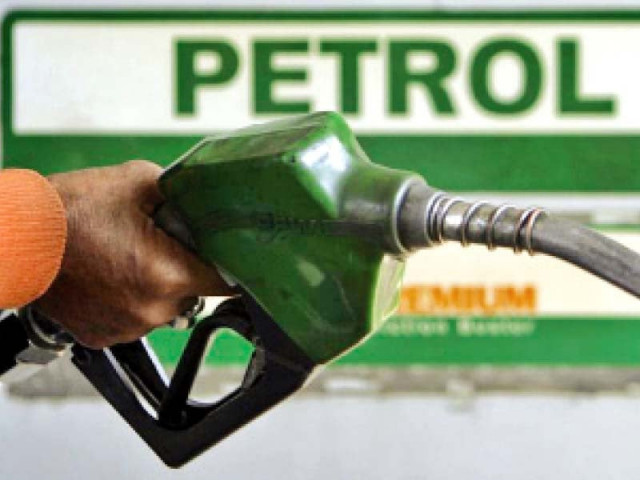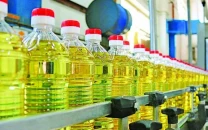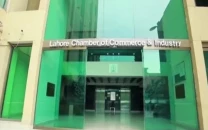New debate on cheaper bike petrol
Motorcycles don’t need high octane fuel which is more than enough for them

Last week, Planning Commission held a meeting for discussion on introducing a special fuel for motorcycles, which should fit the pockets of motorcycle users, who are typically low-income, lower middle class persons.
The issue has been on the table of policymakers for several years now. With the increase in petrol prices, subsequent to the rupee depreciation, the issue has acquired more urgency and importance.
As is the general opinion about Pakistan being an elitist state, petrol supply chain is also geared for higher income car owning people, even though almost 40-50% of petrol is consumed by motorcycles. It is true that petrol market worldwide is geared towards cars as in almost all advanced countries, cars are the major consumer category.
In developing countries including Pakistan, motorcycles are a major category. This is not to suggest that petrol market should ignore cars, however, motorcycle users’ needs and pockets should be kept in view.
If it is an unregulated free market, hopefully, the issue would have been cared for already. If the oil industry is not sensitive to the needs of 50% of the petrol market, politicians would be in these days of high political competition.
The issue has two parts; technical and economic. It is argued by experts that motorcycles do not need high octane (more than RON 90), which is more than enough for normal motorcycle engines. Higher RON 92 and 95 are overkill. It costs more to produce higher RON petrol, especially in Pakistan where older refineries are not geared (do not have catalytic reformers) to producing the higher grade petrol. They have to import and add manganese-based additives, which cost additional money.
It may be a requirement for cars but is not needed for motorcycles. Thus is the need for introducing low RON cheaper petrol, which is a product of our low-tech refineries. The other argument is socio-economic; subsidising the poor. Motorcycle users are a low-income group. It is unfair to tax the high-income car users and low-income motorcycle users equally.
Easiest way is to introduce special (low octane) petrol, which may attract lower tax rate than the normal higher octane petrol. IMF would also go along with it. The lender has been stressing targeted subsidy which goes to the needy and not to a system where all benefit from the booty in the form of lower taxation.
While the best solution is introduction of low-priced, low octane petrol, there are direct ways as well.
In India, some states have lowered taxation on petrol used by motorcycles. Lower priced petrol of Rs30 per litre is being offered. Maximum buying limit has been kept at 10 litres to prevent misuse. Admittedly, not all states have done this, but it is expected to grow.
Aam Admi party is causing great competition in India. In New Delhi and elsewhere, where Aam Admi party has its government, even free electricity is being offered to the poor.
Iran is another example where small users including cars are offered a lower rate in a ration card system. Incidentally, for the knowledge of the younger crowd, there used to be a ration card and ration shop system in 1960s and 70s. One would go to a ration shop to purchase flour with a ration card on which purchases were recorded.
To be fair and balanced, let us now examine the arguments of opponents of the scheme. First, there would be difficulties in the supply chain management of special grade petrol. The answer is as follows.
It is no small market segment; it is 40-50% of the market. An altogether dedicated system can be introduced including specialised petrol pumps. When special facilities can be arranged for a very small segment (2-3% market) of high octane (RON 97), what is the problem in caring for 40-50% market?
Second opposition comes from the motorcycle producers, mostly high-grade, high-priced Japanese motorcycle producers who have a small market share and are expected to go down with falling market share. They argue that their customers require high pick-up motorcycles, which require higher octane.
The answer is that their consumers can continue to buy higher octane fuel. Nobody would force them to buy special grade. Policy should not be dictated by smaller and powerful minority groups. General welfare has to be maximised.
Third, refineries may object suspecting that some or all of them may get stuck with the old technology of skimming and their target of shifting to the new technology of catalytic reformers would be compromised.
This is a difficult question. Some answer may have to be found for them. All petrol is not locally produced. Imported petrol may be of special grade, which may be procured.
There may be competition issues. It may take five or more years for all refineries to convert. May be some may not choose to convert or may not be able to convert without subsidies from consumers or government.
Special petrol for motorcycles offers environmental advantages and lower cost, which can be passed on to the consumers. Besides, it creates fiscal space for government to reduce indirect taxation on low-income groups, which in this case are motorcycle users.
A lesser taxation of Rs20 may be offered to this group. This tax reduction can be balanced, partly or fully, by higher taxation on normal automotive gasoline including RON 95 and RON 97. Thus, there is a potential of pricing special petrol for motorcycles at Rs30 per litre cheaper than the ordinary petrol sold for cars.
It may be possible that this special low octane fuel may be used by older and small car owners, who also belong to low-income group.
Policy designer or maker has to cater for many targets, constraints and priorities. Choices may be limited and options not there at all.
Let the stakeholders get together and find out the solution. Low-income groups are suffering and do not have much space left to wait more for inflation relieving reforms. And the march of new technologies must also go on; Hobson’s choice.
Many people think that deregulation of the petroleum sector is the solution. Market would cater for the needs, they argue. If there is a market segment of 40-50%, the underdogs would come up against the entrenched interests.
The writer is former member energy of Planning Commission and author of several books on the energy sector
Published in The Express Tribune, December 12th, 2022.
Like Business on Facebook, follow @TribuneBiz on Twitter to stay informed and join in the conversation.


















COMMENTS
Comments are moderated and generally will be posted if they are on-topic and not abusive.
For more information, please see our Comments FAQ